Active Learning Strategy for Surrogate-Based Quantile Estimation of Field Function
Abstract
1. Introduction
2. Surrogate Model for Function with Mono-Dimensional Domain Random Field Output
2.1. Model Order Reduction
2.2. Gaussian Process
2.3. Quantile Estimation
- Simulate samples according to
- Compute the empirical distribution function:
- Estimate the quantile by
3. Active Learning for Surrogate-Based Stochastic Process Quantile Estimation
3.1. Infill Criterion
| Algorithm 1: Confidence interval area calculation for quantile estimation based on GP trajectories for a candidate sample |
Inputs: , , Initialization: , , , (1) Define new input and output “virtual” extended datasets and (2) Train the new “virtual” GPs based on and (3) Generate Gaussian process trajectories for the GPs in KL (4) for s = 1: do  end (5) Define the set of quantiles (6) Determine and as quantiles with and levels over the set . (7) Compute over the time mesh return |
3.2. Auxiliary Optimization Problem and Active Learning Process
4. Applications
4.1. Analytical Test Case
4.1.1. Test Case Description
4.1.2. Test Case Results
4.2. Launch Vehicle Design Problem
4.2.1. Test Case Description
Propulsion
Structures
Aerodynamics
Trajectory
4.2.2. Test Case Settings
4.2.3. Results Analysis and Discussion
5. Conclusions
Author Contributions
Funding
Acknowledgments
Conflicts of Interest
References
- Eldred, M. Recent advances in non-intrusive polynomial chaos and stochastic collocation methods for uncertainty analysis and design. In Proceedings of the 50th AIAA/ASME/ASCE/AHS/ASC Structures, Structural Dynamics, and Materials Conference 17th AIAA/ASME/AHS Adaptive Structures Conference 11th AIAA No, Palm Springs, CA, USA, 4–7 May 2009; p. 2274. [Google Scholar]
- Luthen, N.; Marelli, S.; Sudret, B. Sparse polynomial chaos expansions: Literature survey and benchmark. SIAM ASA J. Uncertain. Quantif. 2021, 9, 593–649. [Google Scholar] [CrossRef]
- Mara, T.A.; Becker, W.E. Polynomial chaos expansion for sensitivity analysis of model output with dependent inputs. Reliab. Eng. Syst. Saf. 2021, 214, 107795. [Google Scholar] [CrossRef]
- Zhang, J.; Yue, X.; Qiu, J.; Zhuo, L.; Zhu, J. Sparse polynomial chaos expansion based on Bregman-iterative greedy coordinate descent for global sensitivity analysis. Mech. Syst. Signal Process. 2021, 157, 107727. [Google Scholar] [CrossRef]
- Zhang, J.; Gong, W.; Yue, X.; Shi, M.; Chen, L. Efficient reliability analysis using prediction-oriented active sparse polynomial chaos expansion. Reliab. Eng. Syst. Saf. 2022, 228, 108749. [Google Scholar] [CrossRef]
- Rasmussen, C.E. Gaussian processes in machine learning. In Proceedings of the Summer School on Machine Learning, Tübingen, Germany, 4–16 August 2003; pp. 63–71. [Google Scholar]
- Schulz, E.; Speekenbrink, M.; Krause, A. A tutorial on Gaussian process regression: Modelling, exploring, and exploiting functions. J. Math. Psychol. 2018, 85, 1–16. [Google Scholar] [CrossRef]
- Binois, M.; Wycoff, N. A survey on high-dimensional Gaussian process modeling with application to Bayesian optimization. ACM Trans. Evol. Learn. Optim. 2022, 2, 1–26. [Google Scholar] [CrossRef]
- Capone, A.; Noske, G.; Umlauft, J.; Beckers, T.; Lederer, A.; Hirche, S. Localized active learning of Gaussian process state space models. In Proceedings of the Learning for Dynamics and Control, PMLR, Stanford, CA, USA, 23–24 June 2020; pp. 490–499. [Google Scholar]
- Zhao, G.; Dougherty, E.; Yoon, B.J.; Alexander, F.; Qian, X. Efficient active learning for Gaussian process classification by error reduction. Adv. Neural Inf. Process. Syst. 2021, 34, 9734–9746. [Google Scholar]
- Moustapha, M.; Marelli, S.; Sudret, B. Active learning for structural reliability: Survey, general framework and benchmark. Struct. Saf. 2022, 96, 102174. [Google Scholar] [CrossRef]
- Echard, B.; Gayton, N.; Lemaire, M. AK-MCS: An active learning reliability method combining Kriging and Monte Carlo simulation. Struct. Saf. 2011, 33, 145–154. [Google Scholar] [CrossRef]
- Echard, B.; Gayton, N.; Lemaire, M.; Relun, N. A combined importance sampling and kriging reliability method for small failure probabilities with time-demanding numerical models. Reliab. Eng. Syst. Saf. 2013, 111, 232–240. [Google Scholar] [CrossRef]
- Imani, M.; Ghoreishi, S.F. Bayesian optimization objective-based experimental design. In Proceedings of the 2020 American Control Conference (ACC), Denver, CO, USA, 1–3 July 2020; pp. 3405–3411. [Google Scholar]
- Picheny, V.; Wagner, T.; Ginsbourger, D. A benchmark of kriging-based infill criteria for noisy optimization. Struct. Multidiscip. Optim. 2013, 48, 607–626. [Google Scholar] [CrossRef]
- Janusevskis, J.; Le Riche, R. Simultaneous kriging-based estimation and optimization of mean response. J. Glob. Optim. 2013, 55, 313–336. [Google Scholar] [CrossRef]
- Iwazaki, S.; Inatsu, Y.; Takeuchi, I. Mean-variance analysis in Bayesian optimization under uncertainty. In Proceedings of the International Conference on Artificial Intelligence and Statistics, Virtual, 13–15 April 2021; pp. 973–981. [Google Scholar]
- Lyu, X.; Binois, M.; Ludkovski, M. Evaluating Gaussian process metamodels and sequential designs for noisy level set estimation. Stat. Comput. 2021, 31, 1–21. [Google Scholar] [CrossRef]
- Ghanem, R.G.; Spanos, P.D. Spectral stochastic finite-element formulation for reliability analysis. J. Eng. Mech. 1991, 117, 2351–2372. [Google Scholar] [CrossRef]
- Uribe, F.; Papaioannou, I.; Betz, W.; Straub, D. Bayesian inference of random fields represented with the Karhunen–Loève expansion. Comput. Methods Appl. Mech. Eng. 2020, 358, 112632. [Google Scholar] [CrossRef]
- Tipireddy, R.; Barajas-Solano, D.A.; Tartakovsky, A.M. Conditional Karhunen-Loeve expansion for uncertainty quantification and active learning in partial differential equation models. J. Comput. Phys. 2020, 418, 109604. [Google Scholar] [CrossRef]
- Brevault, L.; Balesdent, M. Uncertainty quantification for multidisciplinary launch vehicle design using model order reduction and spectral methods. Acta Astronaut. 2021, 187, 295–314. [Google Scholar] [CrossRef]
- Sudret, B.; Der Kiureghian, A. Stochastic Finite Element Methods and Reliability: A State-of-the-Art Report; Department of Civil and Environmental Engineering, University of California: Berkeley, CA, USA, 2000. [Google Scholar]
- Halko, N.; Martinsson, P.G.; Shkolnisky, Y.; Tygert, M. An algorithm for the principal component analysis of large data sets. SIAM J. Sci. Comput. 2011, 33, 2580–2594. [Google Scholar] [CrossRef]
- Brevault, L.; Balesdent, M.; Morio, J. Aerospace System Analysis and Optimization in Uncertainty; Springer: Berlin/Heidelberg, Germany, 2020. [Google Scholar]
- Matheron, G. Principles of geostatistics. Econ. Geol. 1963, 58, 1246–1266. [Google Scholar] [CrossRef]
- Sasena, M.J. Flexibility and Efficiency Enhancements for Constrained Global Design Optimization with Kriging Approximations; University of Michigan: Ann Arbor, MI, USA, 2002. [Google Scholar]
- Hansen, N.; Ostermeier, A. Adapting arbitrary normal mutation distributions in evolution strategies: The covariance matrix adaptation. In Proceedings of the IEEE International Conference on Evolutionary Computation, Nagoya, Japan, 20–22 May 1996; pp. 312–317. [Google Scholar]
- Dufossé, P.; Hansen, N. Augmented Lagrangian, penalty techniques and surrogate modeling for constrained optimization with CMA-ES. In Proceedings of the the Genetic and Evolutionary Computation Conference, Lille, France, 10–14 July 2021; pp. 519–527. [Google Scholar]
- Rana, S.; Li, C.; Gupta, S.; Nguyen, V.; Venkatesh, S. High dimensional Bayesian optimization with elastic Gaussian process. In Proceedings of the International Conference on Machine Learning, Sydney, Australia, 6–11 August 2017; pp. 2883–2891. [Google Scholar]
- Balesdent, M.; Bérend, N.; Dépincé, P.; Chriette, A. A survey of multidisciplinary design optimization methods in launch vehicle design. Struct. Multidiscip. Optim. 2012, 45, 619–642. [Google Scholar] [CrossRef]
- Gray, J.S.; Hwang, J.T.; Martins, J.R.; Moore, K.T.; Naylor, B.A. OpenMDAO: An open-source framework for multidisciplinary design, analysis, and optimization. Struct. Multidiscip. Optim. 2019, 59, 1075–1104. [Google Scholar] [CrossRef]
- McBride, B.J. Computer Program for Calculating and Fitting Thermodynamic Functions; National Aeronautics and Space Administration, Office of Management: Washington, DC, USA, 1992; Volume 1271. [Google Scholar]
- Castellini, F. Multidisciplinary Design Optimization for Expendable Launch Vehicles. Ph.D. Thesis, Politecnico di Milano, Milan, Italy, 2012. [Google Scholar]
- Blake, W.B. Missile Datcom: User’s Manual-1997 FORTRAN 90 Revision; Technical Report; Air Force Research Lab Wright-Patterson AFB OH Air Vehicles Directorate: Dayton, OH, USA, 1998. [Google Scholar]
- Krueger, A.J.; Minzner, R.A. A mid-latitude ozone model for the 1976 US Standard Atmosphere. J. Geophys. Res. 1976, 81, 4477–4481. [Google Scholar] [CrossRef]
- Betts, J.T. Survey of numerical methods for trajectory optimization. J. Guid. Control Dyn. 1998, 21, 193–207. [Google Scholar] [CrossRef]
- Falck, R.; Gray, J.S.; Ponnapalli, K.; Wright, T. dymos: A Python package for optimal control of multidisciplinary systems. J. Open Source Softw. 2021, 6, 2809. [Google Scholar] [CrossRef]
- Baudin, M.; Dutfoy, A.; Iooss, B.; Popelin, A.L. OpenTURNS: An industrial software for uncertainty quantification in simulation. arXiv 2015, arXiv:1501.05242. [Google Scholar]
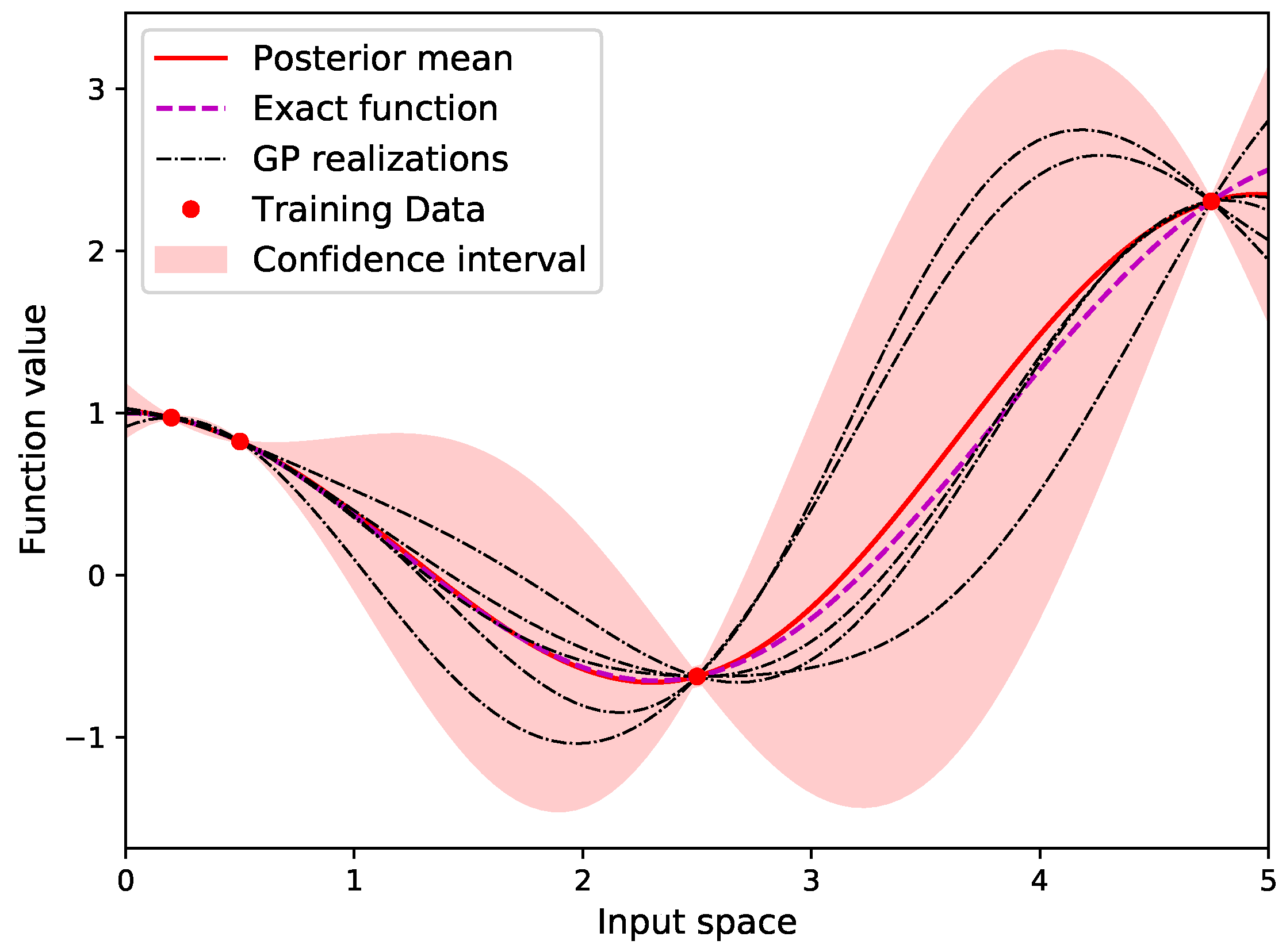

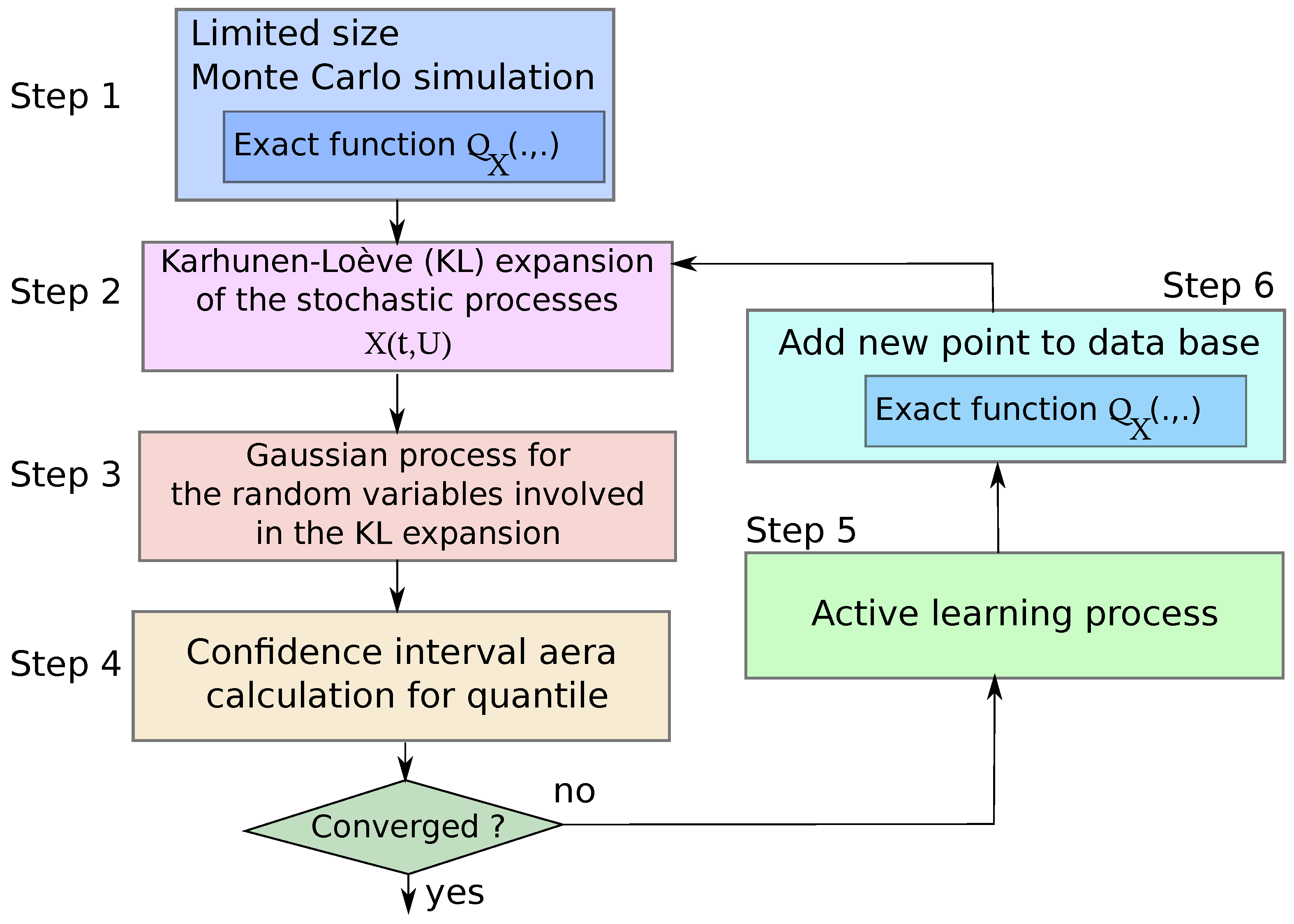
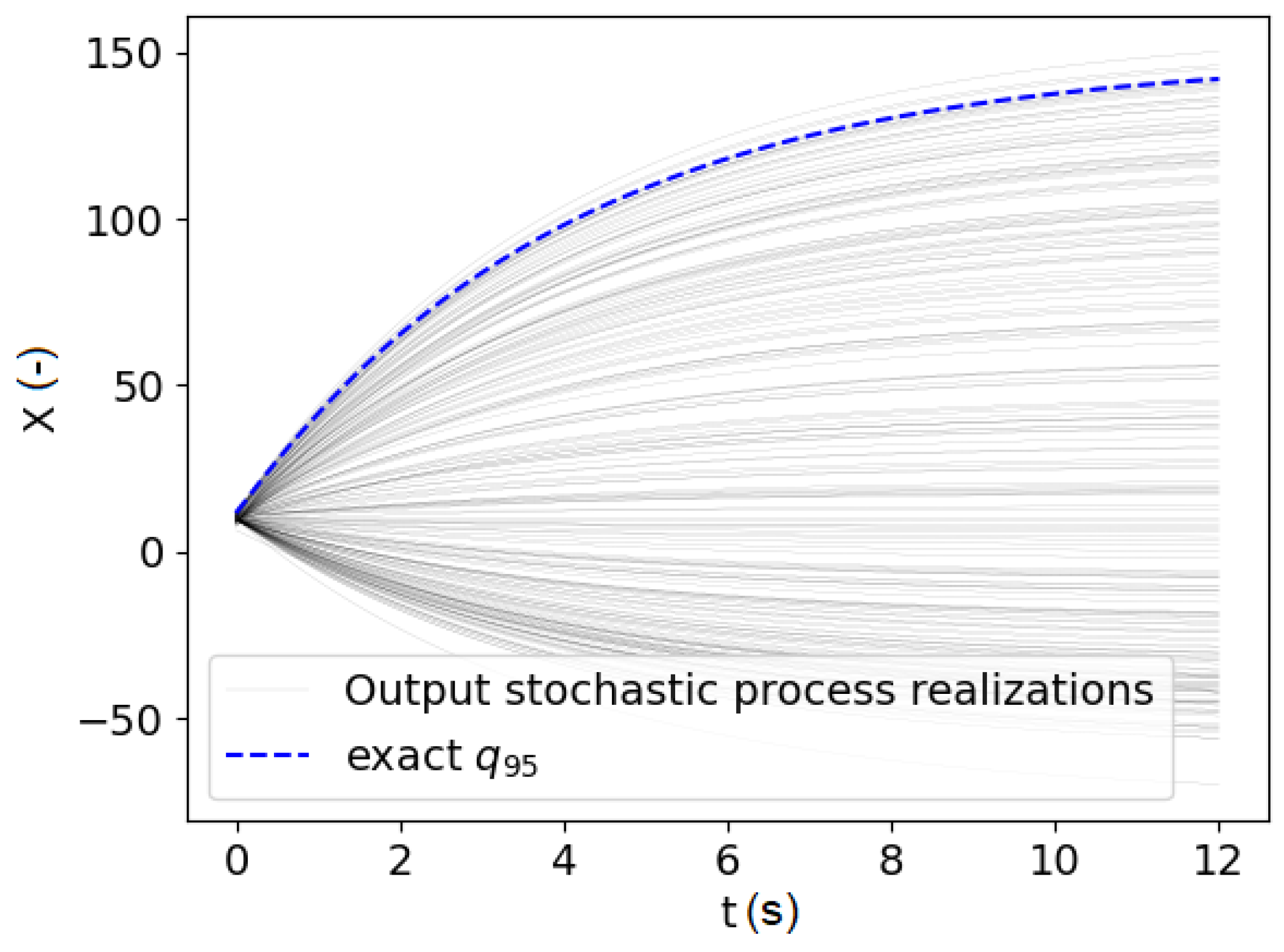
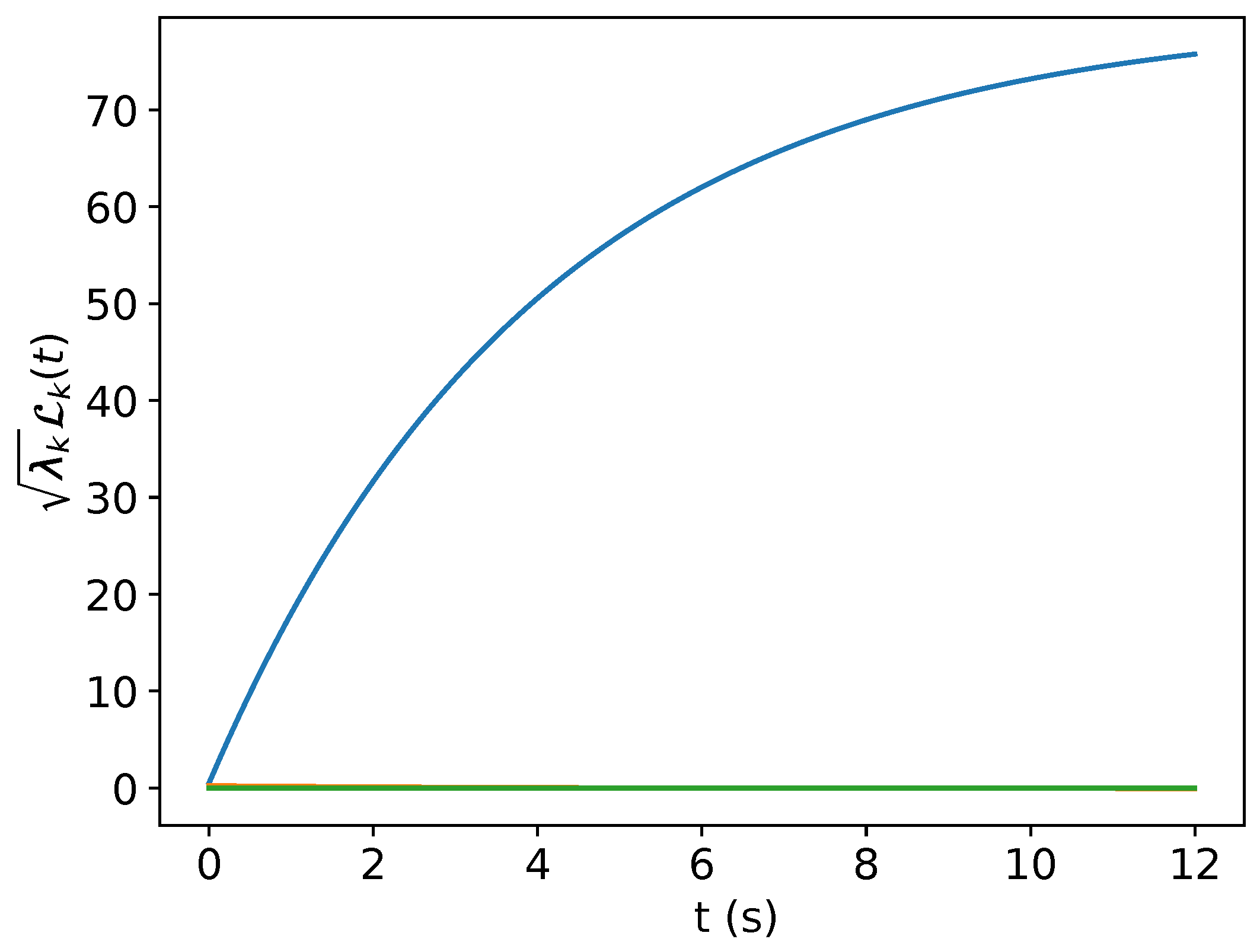
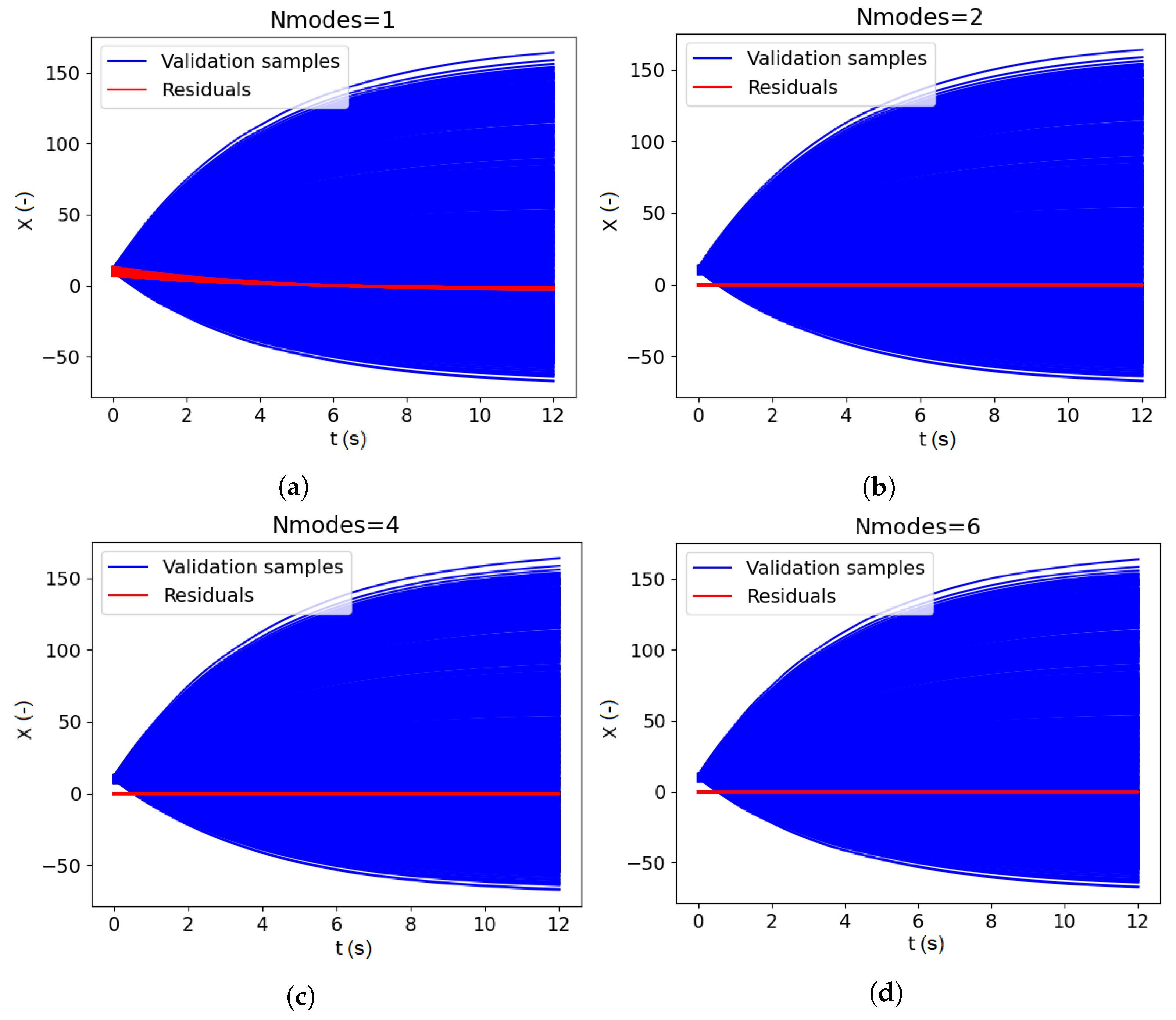
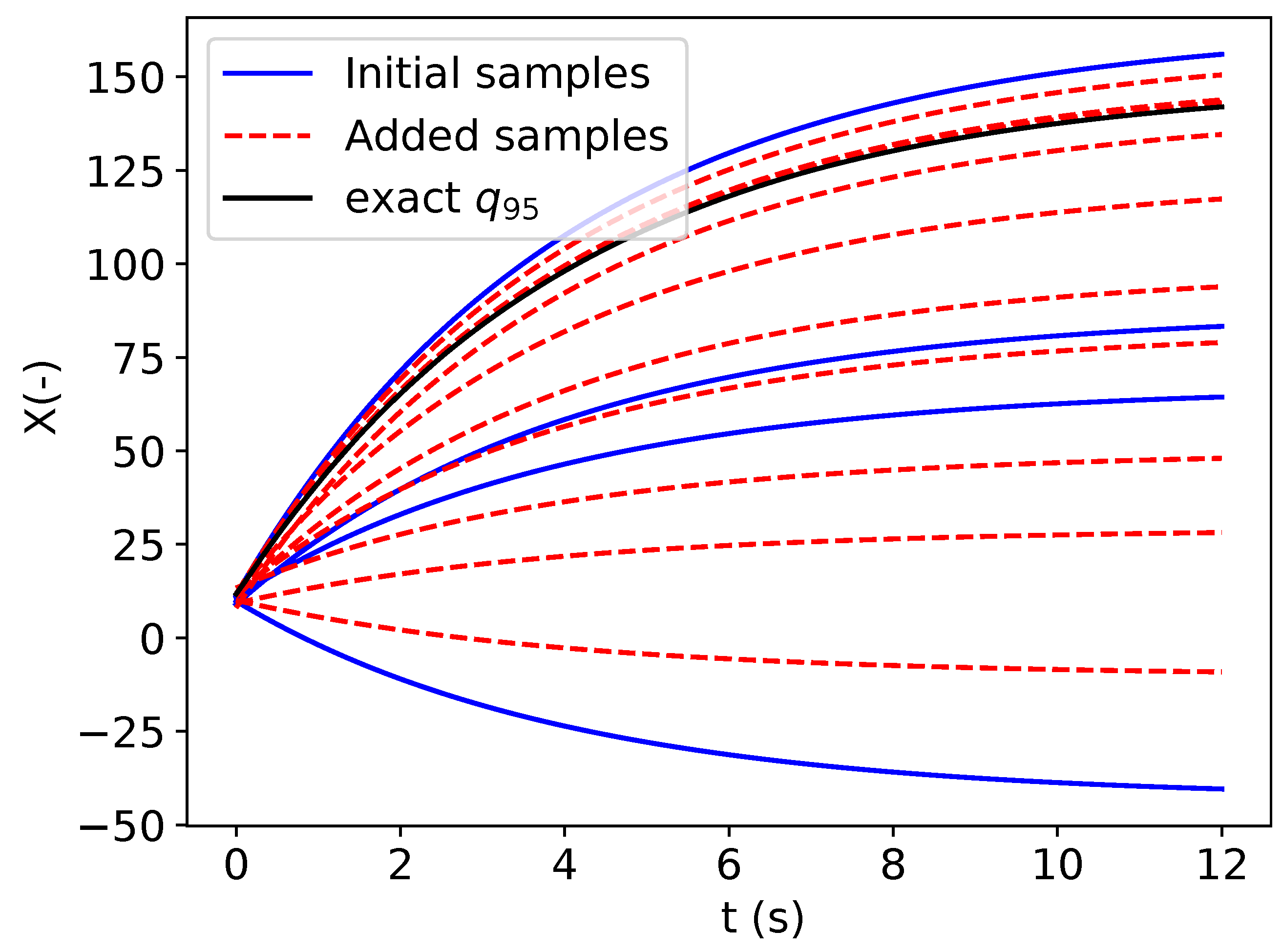
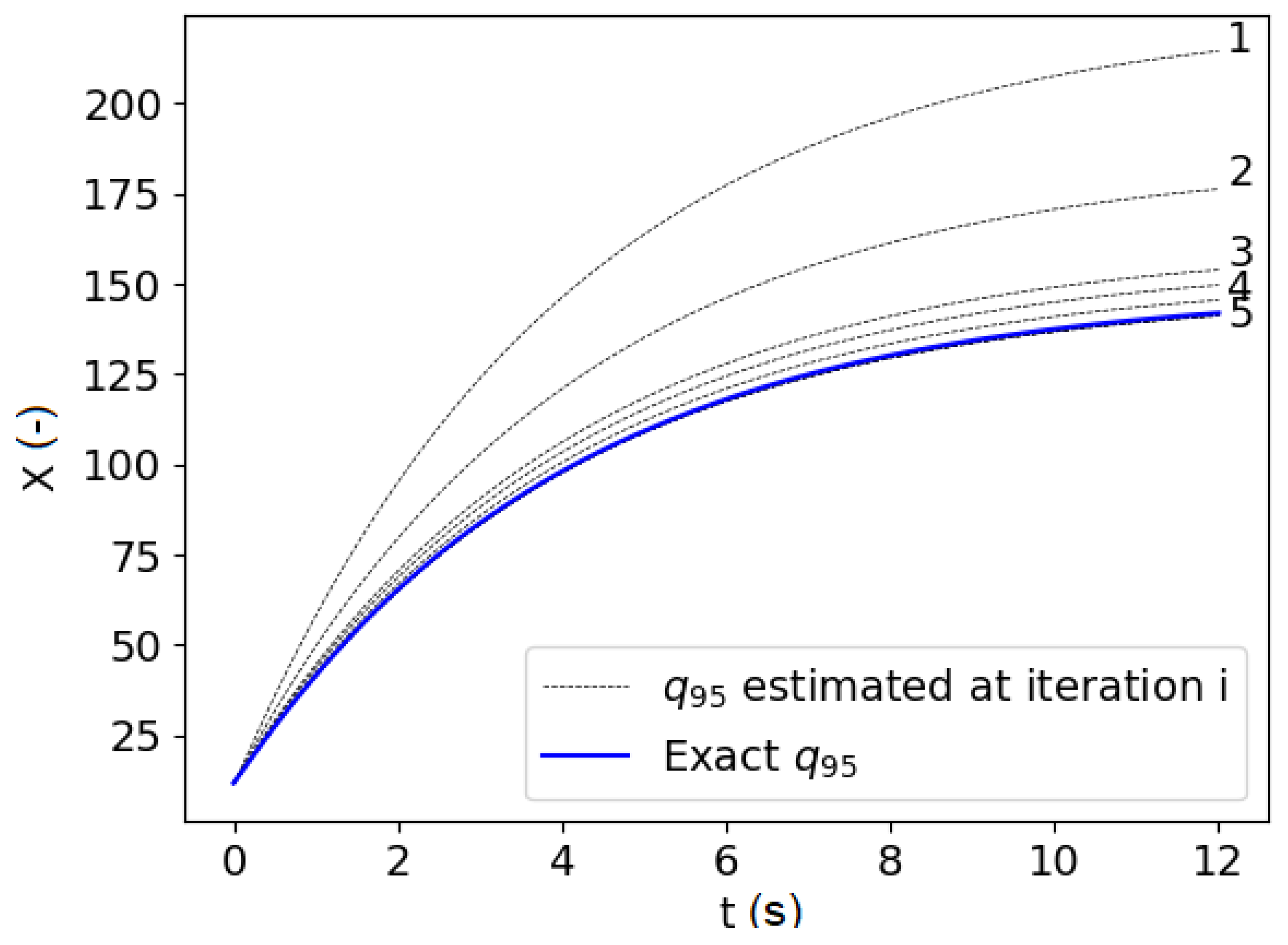
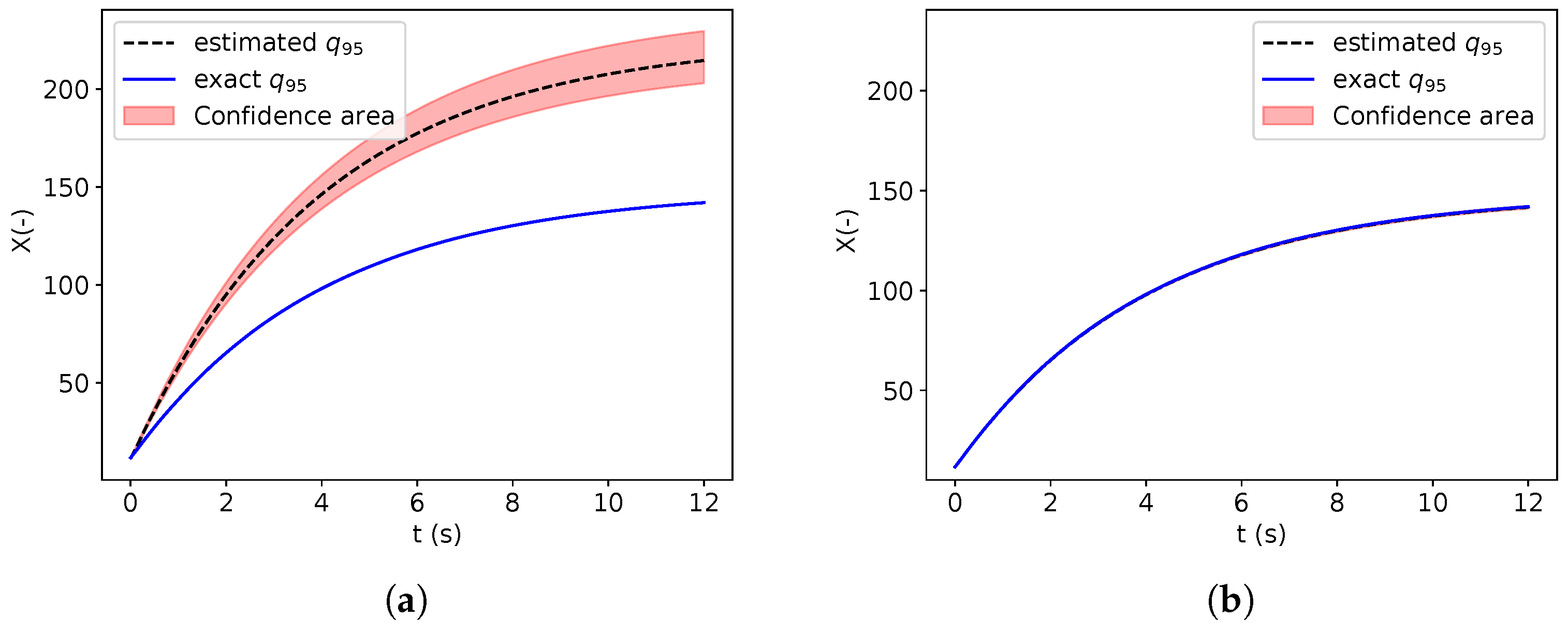
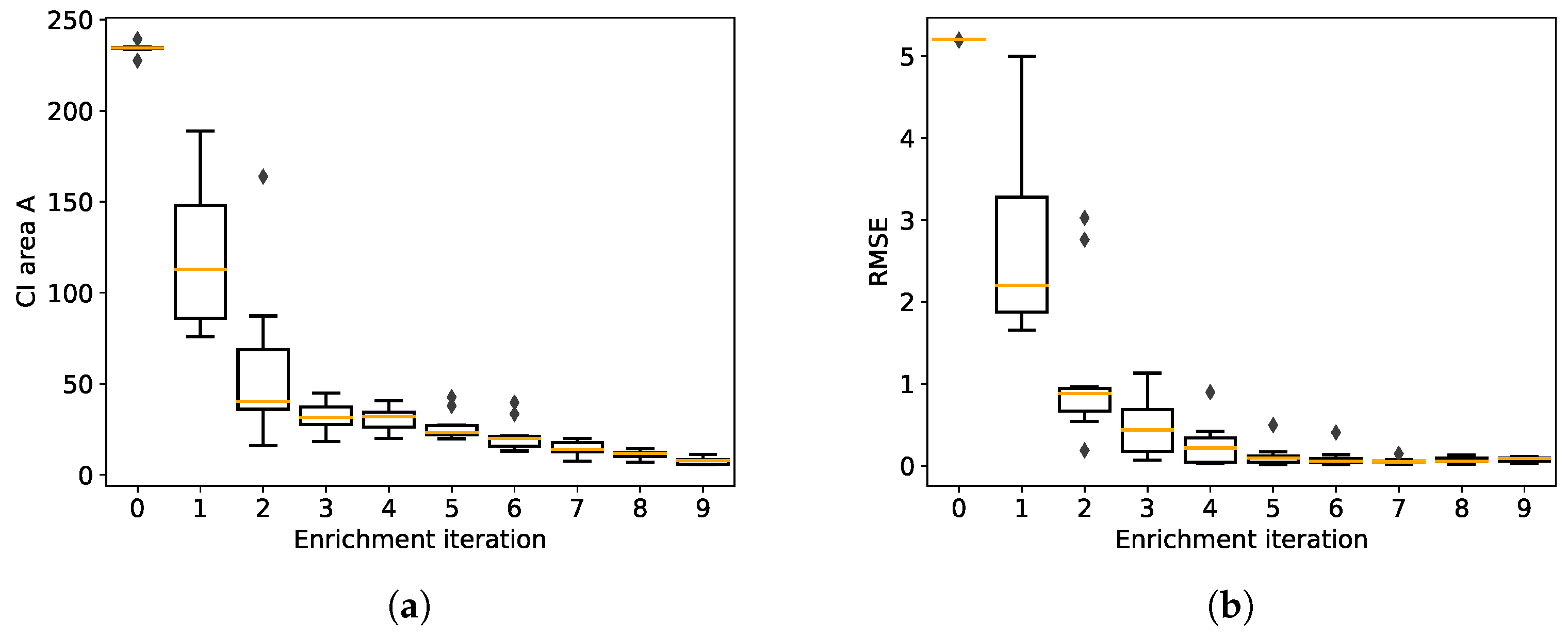
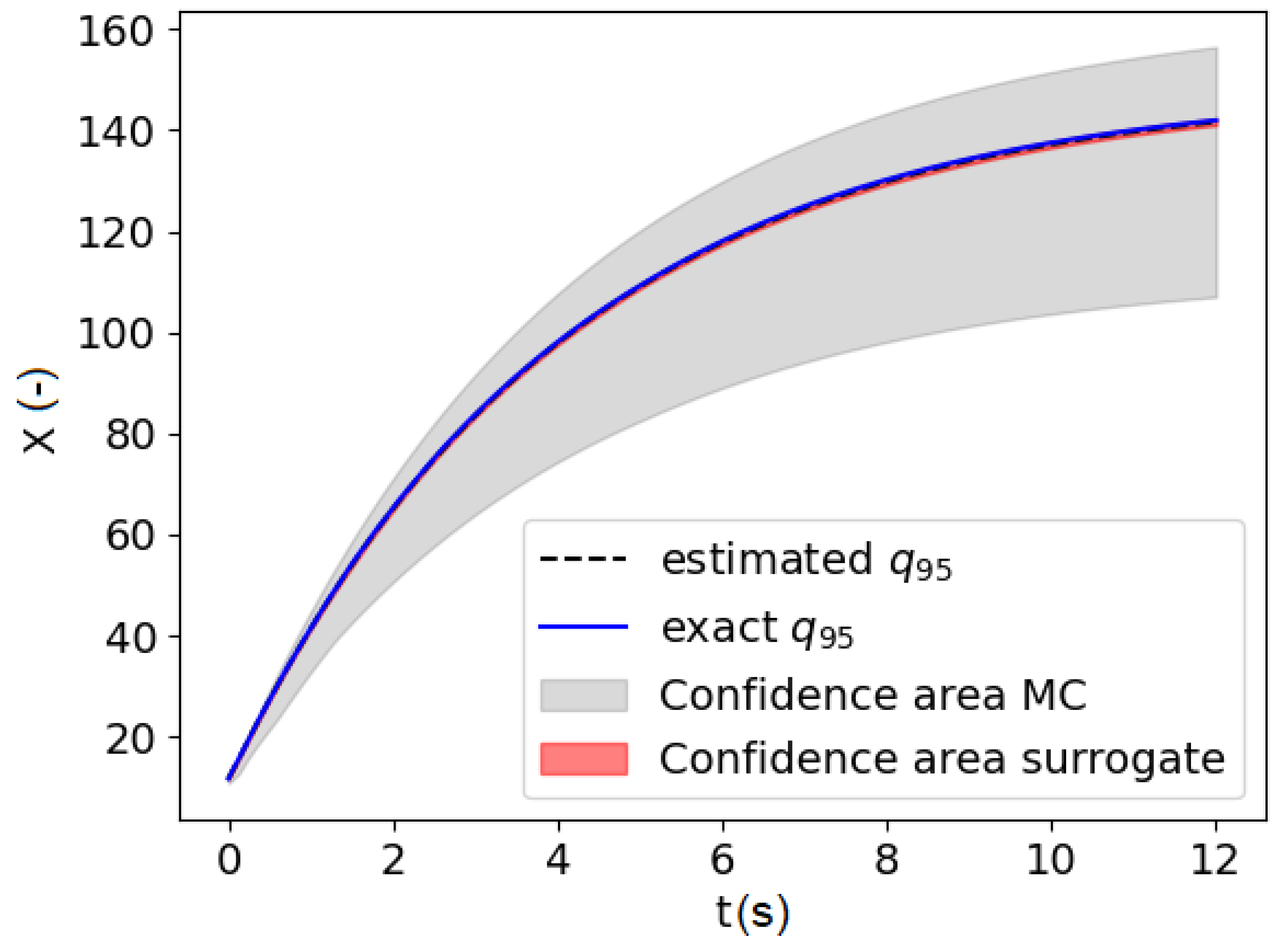
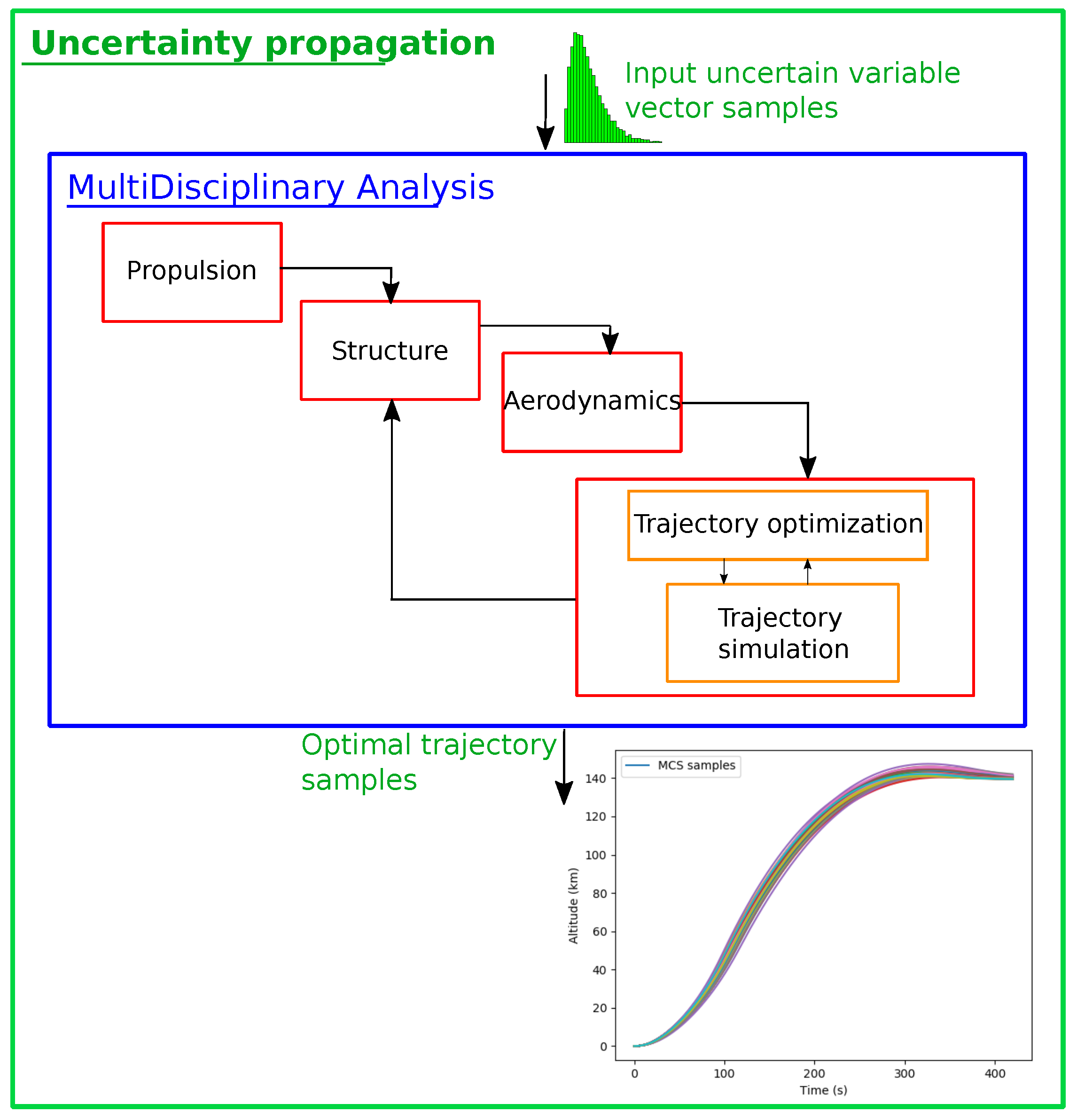
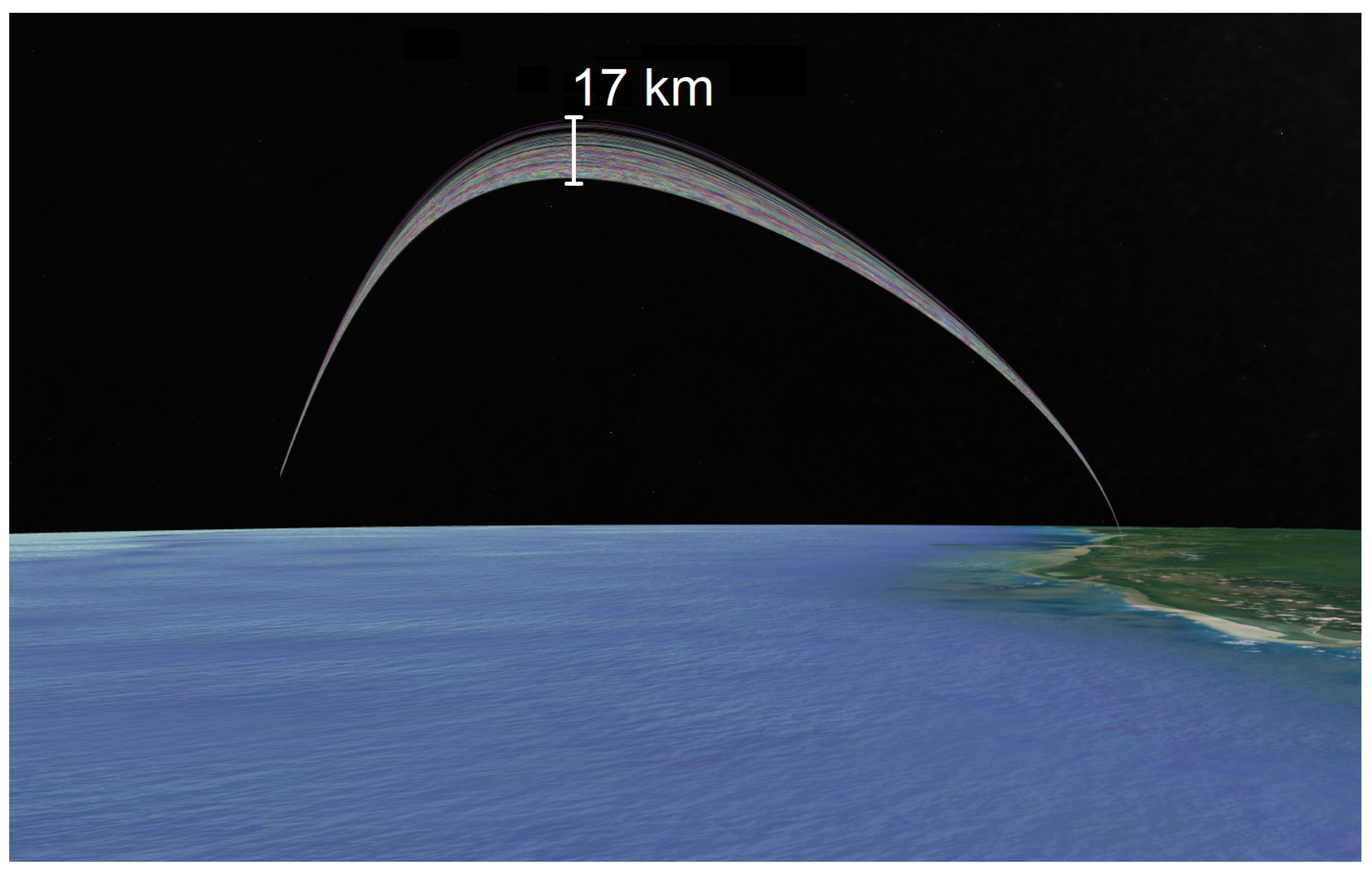
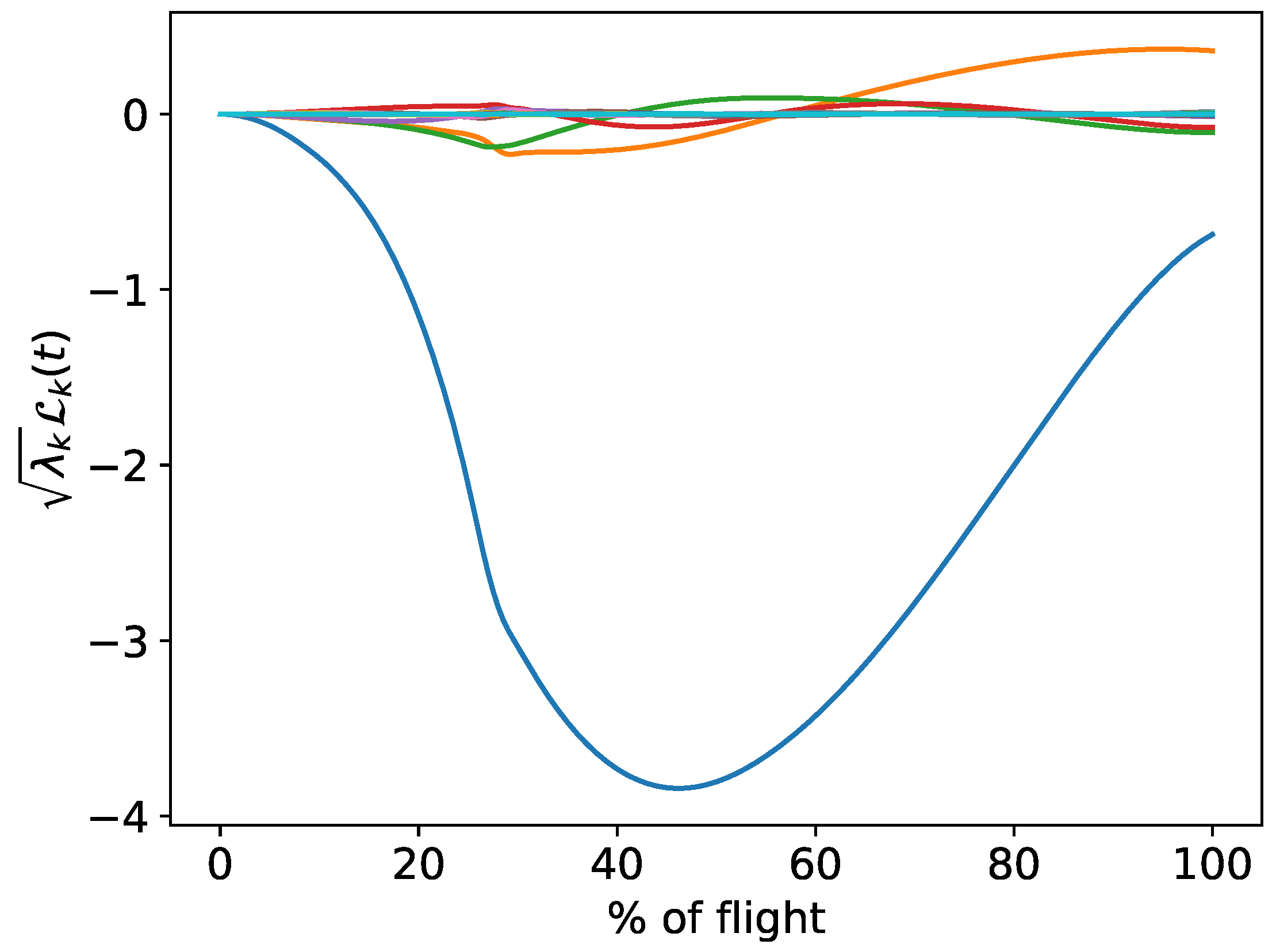
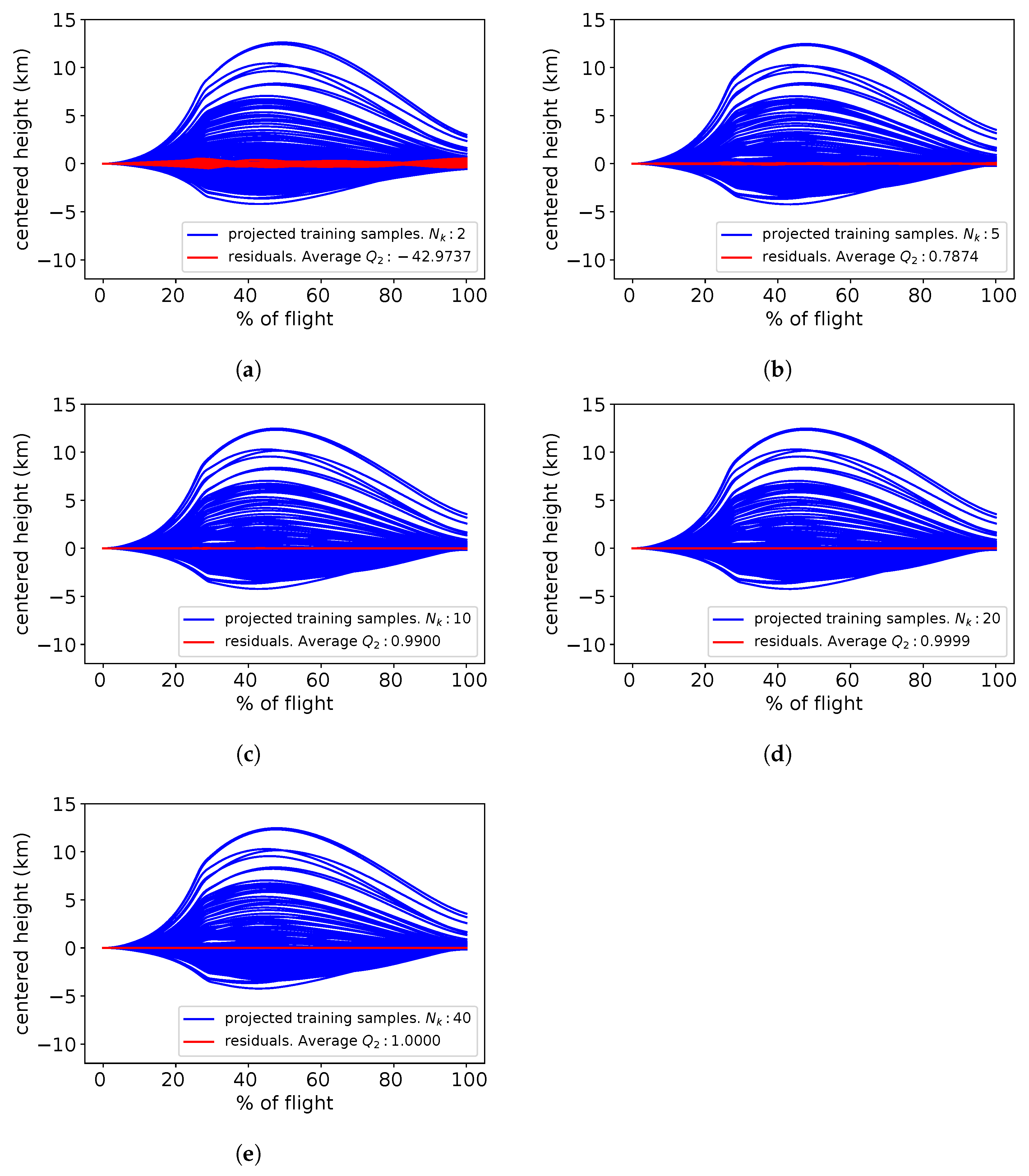
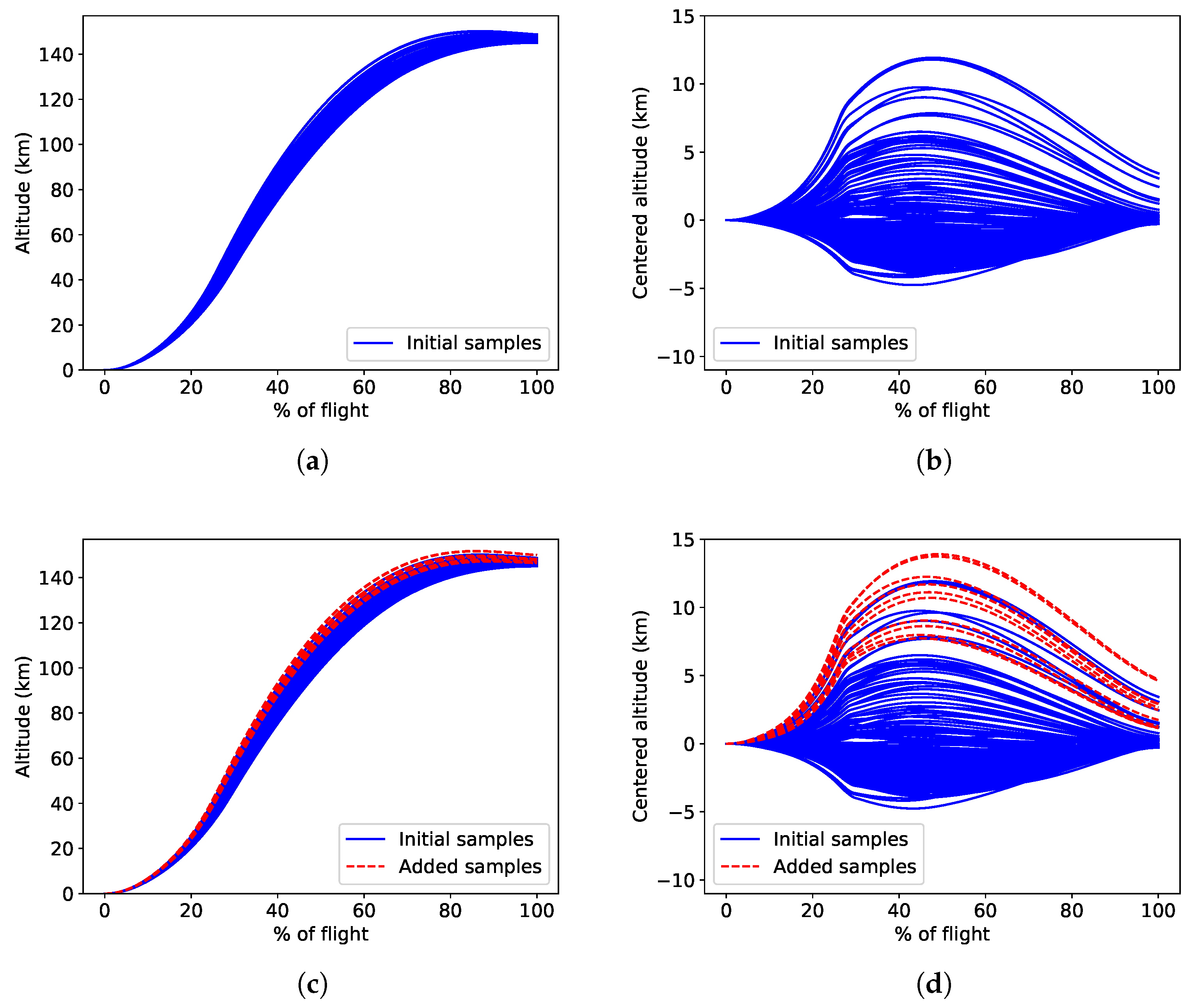
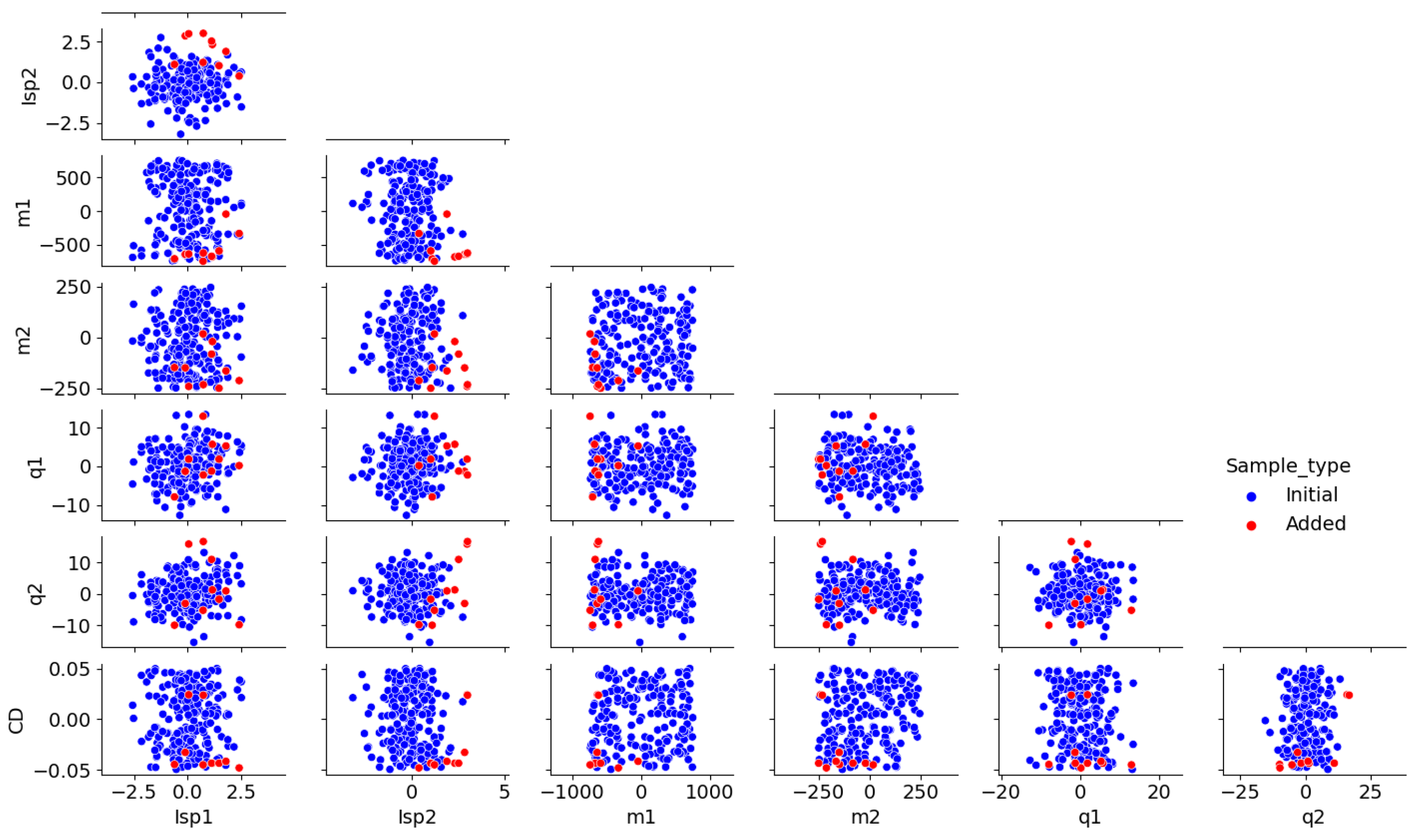
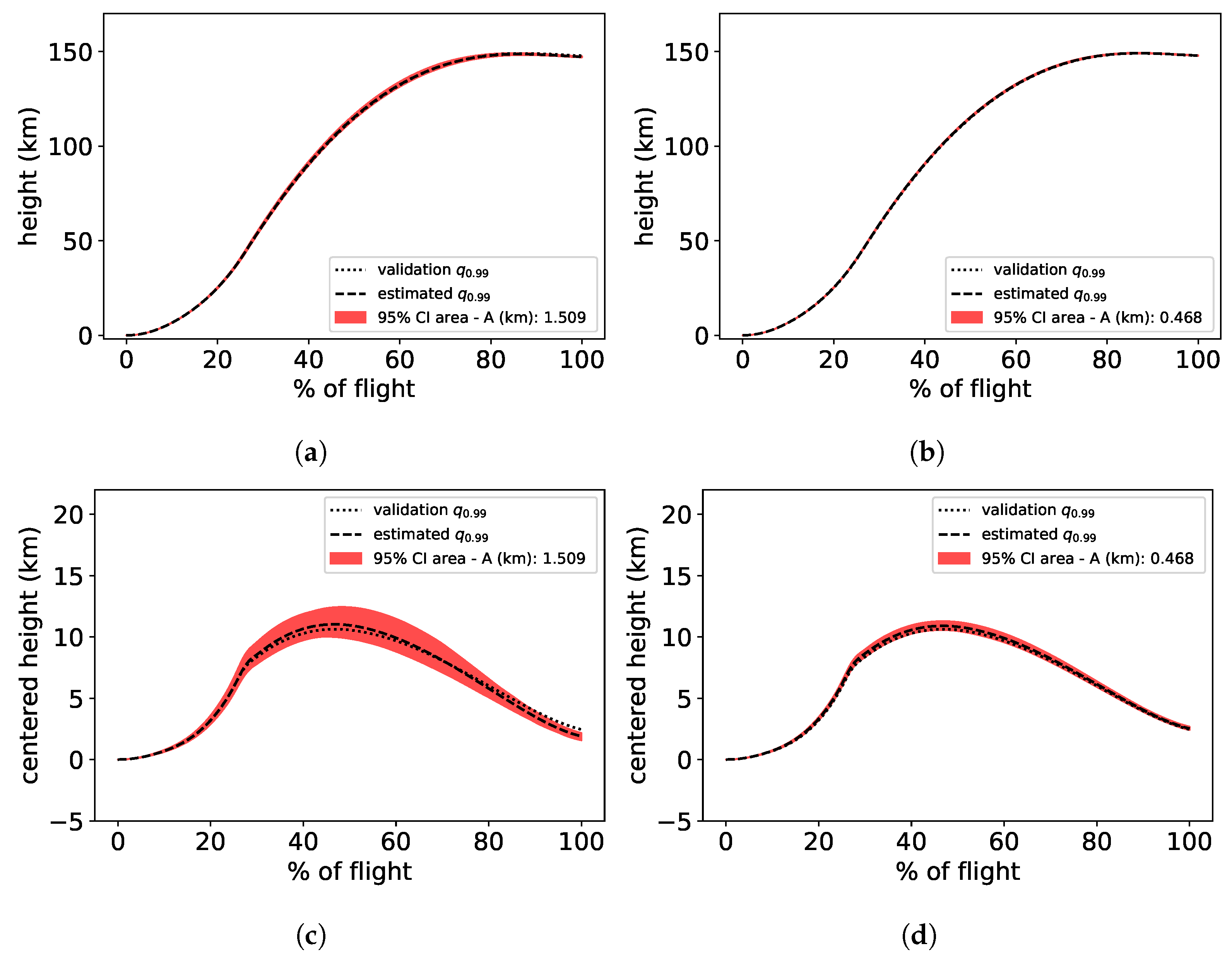
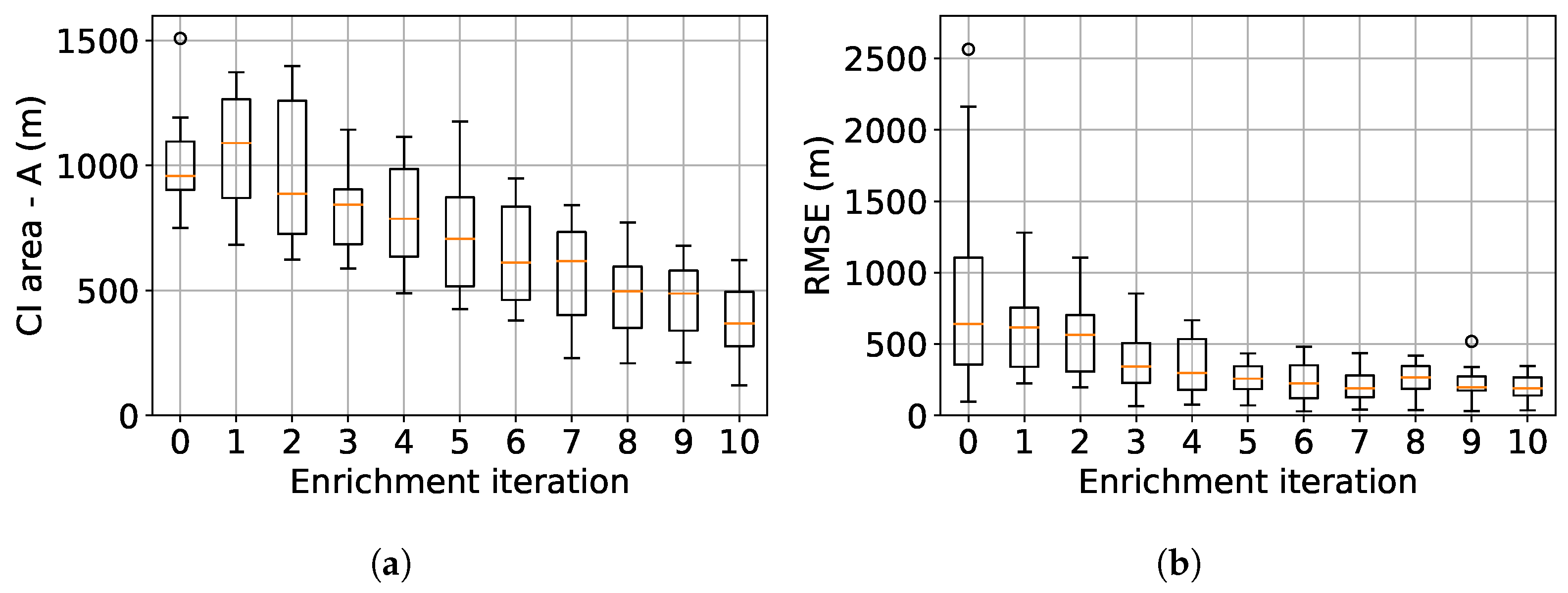
| Number of KL Modes | 1 | 2 | 4 | 6 |
|---|---|---|---|---|
| Q2 | −489.28 | 0.9998 | 1.0000 | 1.0000 |
| Name | Notation | Model (Mean, Standard Deviation) |
|---|---|---|
| Specific impulse stage 1 | (additive, | |
| Specific impulse stage 2 | additive, | |
| Residual mass stage 1 | (additive, | |
| Residual mass stage 2 | (additive, | |
| Mass flow rate stage 1 | (additive, | |
| Mass flow rate stage 2 | (additive, | |
| Drag coefficient | (additive, −) |
| Number of KL Modes | 2 | 5 | 10 | 20 | 40 |
|---|---|---|---|---|---|
| Q2 | −42.9737 | 0.7874 | 0.9900 | 0.9999 | 1.0000 |
Publisher’s Note: MDPI stays neutral with regard to jurisdictional claims in published maps and institutional affiliations. |
© 2022 by the authors. Licensee MDPI, Basel, Switzerland. This article is an open access article distributed under the terms and conditions of the Creative Commons Attribution (CC BY) license (https://creativecommons.org/licenses/by/4.0/).
Share and Cite
Brevault, L.; Balesdent, M.; Valderrama-Zapata, J.-L. Active Learning Strategy for Surrogate-Based Quantile Estimation of Field Function. Appl. Sci. 2022, 12, 10027. https://doi.org/10.3390/app121910027
Brevault L, Balesdent M, Valderrama-Zapata J-L. Active Learning Strategy for Surrogate-Based Quantile Estimation of Field Function. Applied Sciences. 2022; 12(19):10027. https://doi.org/10.3390/app121910027
Chicago/Turabian StyleBrevault, Loïc, Mathieu Balesdent, and Jorge-Luis Valderrama-Zapata. 2022. "Active Learning Strategy for Surrogate-Based Quantile Estimation of Field Function" Applied Sciences 12, no. 19: 10027. https://doi.org/10.3390/app121910027
APA StyleBrevault, L., Balesdent, M., & Valderrama-Zapata, J.-L. (2022). Active Learning Strategy for Surrogate-Based Quantile Estimation of Field Function. Applied Sciences, 12(19), 10027. https://doi.org/10.3390/app121910027







